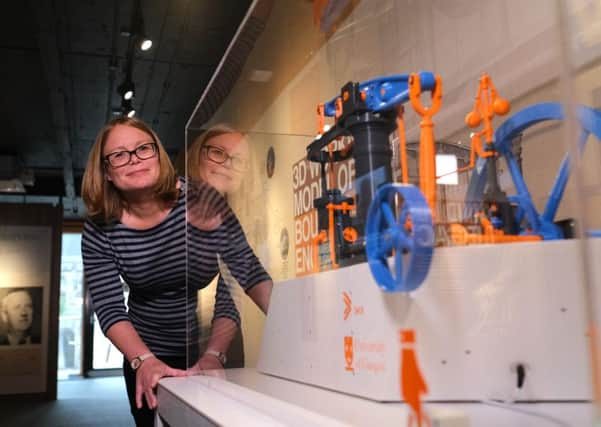University of Glasgow to rename engineering school after James Watt


Watt struck upon one of his greatest breakthroughs while working at the university in the middle of the 18th century, forging a lasting association with the seat of learning.
The decision is particularly poignant for one of the university’s modern-day employees, given she recently discovered her own family line stretches six generations back directly to the man who played a vital role in kickstarting the industrial revolution.
Advertisement
Hide AdAdvertisement
Hide AdDebbie Beales, who is descended from Watt’s son, also called James, said she and her family were delighted by the gesture.
Watt’s ties with the university were formed at an early age. He was just 20 when he was provided with lodgings and a workshop after joining it in 1756 to work as an instrument maker, manufacturing a range of medical equipment.
Seven years later, he was presented by John Anderson, a professor of natural philosophy, with a model Newcomen steam engine in need of repair. The task would change not only Watt’s life, but those of countless others.
Inspired by the latest theories surrounding heat to find a way of not only fixing, but improving the engine, by 1765 Watt famously struck upon the idea of a separate condenser, an innovation that improved its efficiency and allowed for significant fuel savings.
To this day, the engine worked on by Watt remains on display at the university.
For Beales, the personal links to Watt, and their shared history at the university, is an immense source of pride.
She said: “I had no idea of my family’s connection to James Watt until a cousin recently decided to research the Beales family tree and uncovered this link.
“While dad passed away a couple of years ago, my gran Jean is still alive and I know that she is as proud as I am of the family’s link to a pioneering figure like Watt, and pleased to know that the school of engineering is marking the 200th anniversary of his death with this renaming.”
Advertisement
Hide AdAdvertisement
Hide AdThe ancestral research showed that Watt’s son, James, had a son named John in 1832. John’s son, Alexander, was born in 1851. His son, also named Alexander, was born in 1890. His daughter, Jean, married Michael Beales, and together they had a son named Robert – Debbie’s father.
Beales, who works in the university’s health, safety and wellbeing unit, added: “It came as quite a shock but the more we thought about it the more we realised that there were odd connections between generations – my dad worked as a shipwright, as Watt’s own father did, and although my dad was camera-shy he definitely bore a resemblance to Watt.
“I’ve worked at the university myself for 15 years, and in a previous role I regularly visited the print unit in the James Watt South building, never realising that I had a deeper connection to the man it was named after.
“I’ve always been proud to work for the university, and I was always impressed by the school of engineering’s efforts to make engineering more diverse and creative when I visited the James Watt South.”
Professor David Cumming, head of the newly named school, said: “We’re delighted to be officially announcing the James Watt School of Engineering on the date of the 200th anniversary of Watt’s passing.
“The importance of Watt’s contribution to the field of engineering can’t really be overstated, and we’re very proud to be associated with the improvements he made to the Newcomen steam engine. The world has come a long way in 200 years, and much of that distance was covered using technology derived from the principles he established.
“While we’ve long had a building and two chairs in electrical and mechanical engineering named after Watt, it seemed fitting to mark the start of the third century of a post-Watt world with the renaming of the school, not least because we’ll eventually be moving to a state-of-the-art new facility on the site of the old Western Infirmary as part of the university’s billion-pound campus improvement programme.”
The decision to rename the school forms part of the university’s year-long celebration of the life and legacy of Greenock-born Watt. It has included an international symposium, a series of events during the Glasgow Science Festival and an exhibition in the university library which includes a 3D printed working scale model of one of his engines that was designed and built by students.